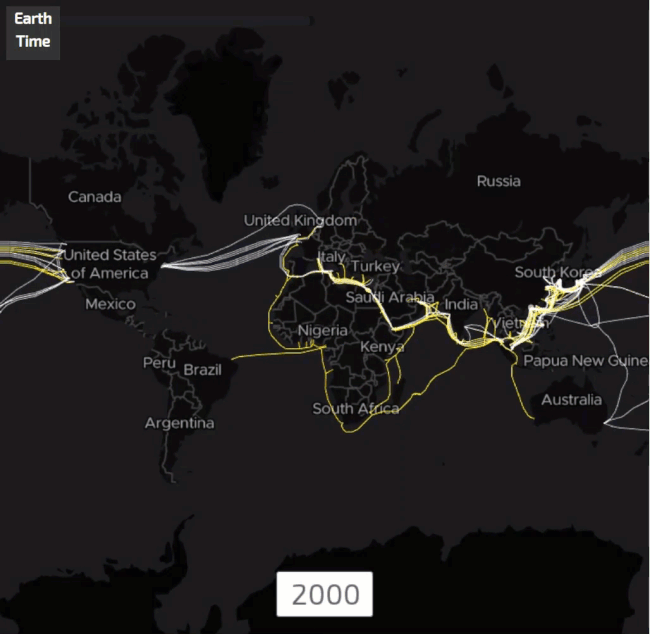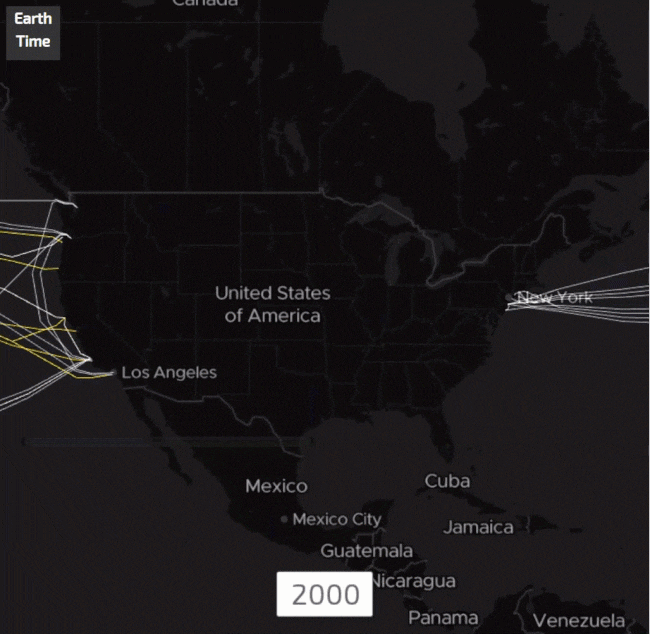Tracing the global rise of China's tech giants

Huawei is one of several Chinese tech giants that have managed to pervade the global economy. Image: REUTERS/Aly Song

Get involved with our crowdsourced digital platform to deliver impact at scale
Stay up to date:
Global Governance
- China's tech giants have made extensive inroads around the world.
- Attempting to blunt that growth for geopolitical reasons could trigger negative consequences.
- The Forum has created a visualization of decades of global expansion for these companies.
Huawei and other Chinese technology giants have spread their influence throughout the global economy, creating a complicated latticework of international trade and investment that could make meddling with them for geopolitical reasons a dicey proposition.
For some perspective on the rapid rise of China’s biggest tech firms – the largest of which have become fodder for a brewing US-China trade war – the World Economic Forum has published a visualization that traces their expanding global footprint in the years preceding the dust-up between the world’s top two economies.
In addition to Huawei – the Chinese tech giant with the most global name recognition – 11 other firms, including Hikvision, Baidu, and Tencent, are represented. According to the Australian Strategic Policy Institute, whose data provided the basis for the visualization, these Chinese companies are increasingly able to exert their influence over industries and governments around the world, as they build smart city systems, set up research and development labs, and bankroll undersea cables. Their expanding reach has, in some cases, prompted defensive actions from governments and commercial competitors.

The US government has blacklisted Huawei, which presents a ripe target for geo-economic gamesmanship because of its size and strategic importance, while pressing other global players to similarly shun the telecommunications equipment-maker. The company is building many of the nascent, super-fast 5G networks that have dominated talk in the tech world – and US officials have argued that their potential to be used for espionage threatens national security. Huawei has denied it poses a security risk.
“They want to put us out of business,” Huawei’s chief legal officer said recently. “This is not normal.”
Early Days
The visualization picks up on China’s expanding technology foothold at an early stage. Nearly two decades ago, China Telecom played an important initial role in the country's global conquest by co-leading the completion of a 39,000-kilometre optical submarine cable, connecting Southeast Asia to the Middle East and Western Europe. It is now Australia’s primary data link to Asia, and prone to disruptions.

Since then, Chinese companies have helped weave a growing web of cables around the globe that now covers more than 500,000 kilometres. By way of comparison, the Earth’s circumference is about 40,000 kilometres.
Huawei
The proliferating dots in this part of the visualization represent Huawei’s presence, whether it’s in a Belarus-based video surveillance system or a base-station connecting telecom networks in Zimbabwe. 5G wireless technology is particularly important for the company, as it marks an upgrade in terms of speed and could be used to connect and monitor just about any type of device, appliance, or vehicle. Huawei recently reported that it had signed 40 contracts to supply 5G gear to global telecommunications carriers. While the US and South Korea have rolled out 5G in limited areas, China is aiming for nationwide coverage by 2020. Those countries able to move the fastest on 5G may be able to dictate related standards.

The US Market
Huawei, which was founded in 1987, had established a handful of R&D centres in the US by 2001. By 2003, it had sealed a partnership with American company 3Com to distribute its gear around the world. Now, Huawei and other Chinese technology companies maintain a US presence that includes university research partnerships (the light green dots in this part of the visualization) and smart city systems, replete with security equipment (light purple dots). In 2016, for example, Hikvision was touting its sale of security equipment to a school district in Minneapolis; less than three years later, it appears that the US government is trying to actively limit local expansion for Hikvision and other Chinese firms. Beijing has said it plans to retaliate.

What the Future Holds
While the visualization includes projections through the year 2020, a lot can happen between now and then. Even as the US exerts pressure on China’s tech giants, these companies have already managed to establish a presence in fast-growing, developing economies, including in Africa and Latin America. China Telecom (the yellow dots in this part of the visualization) and China Mobile (light blue dots) have made extensive inroads in these markets—and just about everywhere else.

The pervasiveness of Chinese firms and their technology means that undercutting their normal business operations could trigger far-reaching, unanticipated consequences. The US crackdown on Huawei, for example, could spell disaster for small wireless providers in many parts of the country that rely on Huawei equipment in their networks.

The Forum’s Transformation Maps contextualize hundreds of global issues, industries and countries in an interactive tool. Many of the maps, including the map on China, include data visualizations that tell stories about topics including trade, resource depletion, and the devastating effects of climate change. You'll need to register to view.
Don't miss any update on this topic
Create a free account and access your personalized content collection with our latest publications and analyses.
License and Republishing
World Economic Forum articles may be republished in accordance with the Creative Commons Attribution-NonCommercial-NoDerivatives 4.0 International Public License, and in accordance with our Terms of Use.
The views expressed in this article are those of the author alone and not the World Economic Forum.
Related topics:
The Agenda Weekly
A weekly update of the most important issues driving the global agenda
You can unsubscribe at any time using the link in our emails. For more details, review our privacy policy.
More on Global CooperationSee all
Robin Pomeroy and Sophia Akram
April 22, 2024
Johnny Wood
April 17, 2024
Efrem Garlando
April 16, 2024
Alexandre Raffoul and Kai Keller
April 10, 2024
Alejo Czerwonko
March 22, 2024
Marcela Guerrero Casas
March 18, 2024






